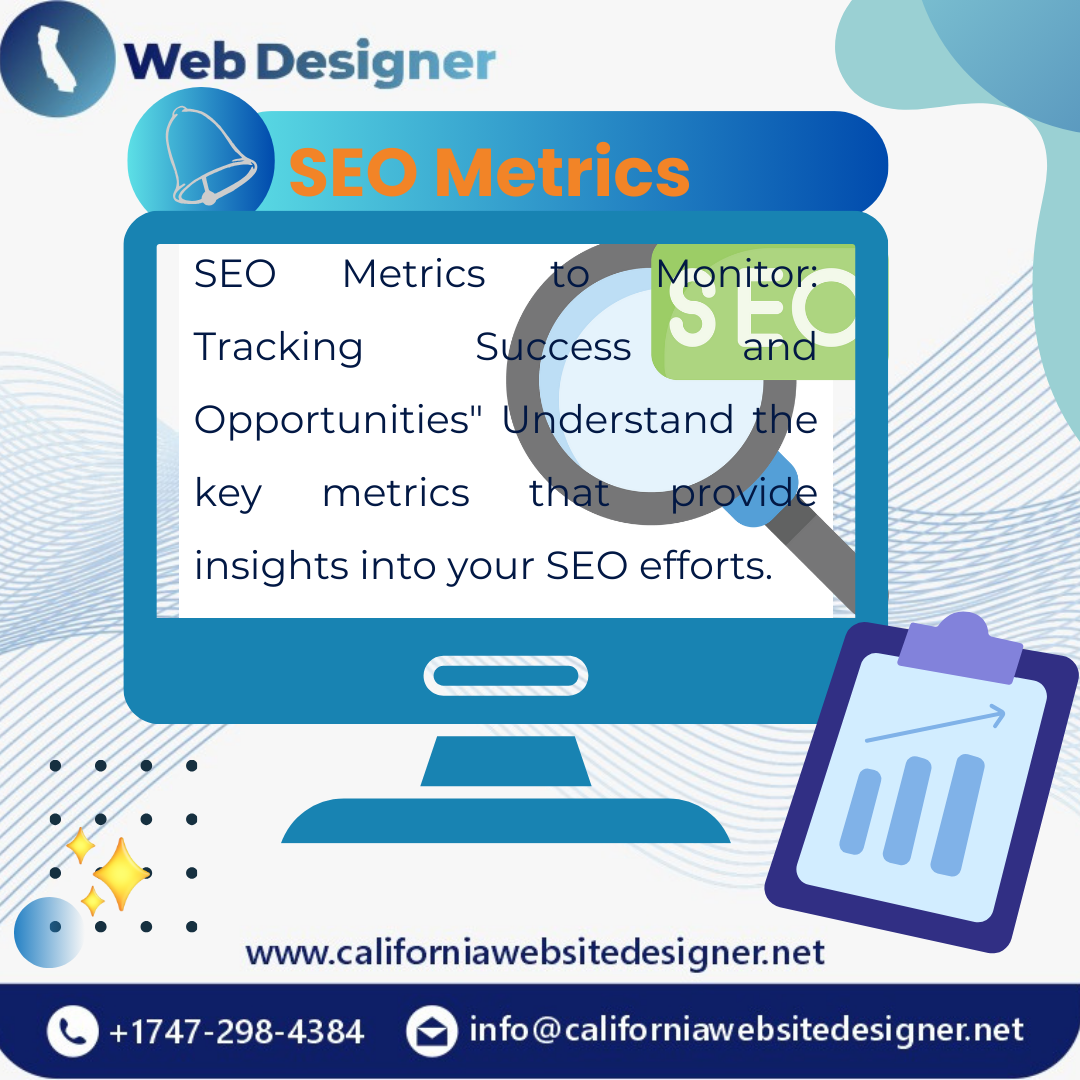SEO Metrics: In the dynamic and ever-evolving landscape of digital marketing, the pivotal foundation for achieving success lies in a profound understanding and adept leveraging of key SEO metrics. This comprehensive guide aims not only to measure your present Search Engine Optimization performance but, more crucially, to unveil untapped opportunities for enhancement.
Success in the digital realm is not merely a destination but an ongoing journey, and by delving into the core metrics outlined here, you not only gauge your current standing but strategically position yourself to capitalize on opportunities that can propel your website to unprecedented heights. This proactive approach ensures that your SEO efforts are not just reactive to the current trends but are actively shaping a trajectory toward sustained success and continuous improvement.
1. Organic Traffic Growth: Unveiling Opportunities for Success
Organic traffic is the heartbeat of your website, representing the users who discover your content through search engines. Understanding its growth is not just a metric; it’s a compass pointing toward your SEO success and untapped opportunities.
Key Insights
In the journey towards SEO success, analyzing month-over-month (MoM) organic traffic growth is akin to reading the pulse of your website. A steady rise indicates positive momentum, while sudden declines might signal issues. For instance, if you notice a spike in traffic after updating your blog with a comprehensive guide on the latest industry trends, there’s a clear correlation between content updates and increased visibility.
To dive deeper into the dynamics, leverage tools like Google Analytics for a detailed breakdown of traffic sources. Identify which pages are attracting the most organic visitors and replicate the strategies that led to their success. Additionally, correlate traffic fluctuations with algorithm changes; understanding these correlations helps you adapt your content strategy for sustained success.
Suppose your website, focused on eco-friendly home products, experiences a surge in organic traffic following an update on sustainable living tips. This correlation signals a direct connection between content updates and user interest. By consistently providing valuable content in this niche, you’re not just measuring success but creating opportunities for further growth in an environmentally conscious audience.
In easy terms, imagine your website as a garden. Organic traffic is the sunlight, and by understanding its growth patterns, you can nurture your garden (website) for continuous success and the blossoming of new opportunities.

2. Keyword Ranking: Unlocking Opportunities for Success
In the vast digital landscape, understanding how your website ranks for specific keywords is pivotal for achieving success in the competitive realm of search engine results pages (SERPs). Keyword ranking not only gauges visibility but also unveils opportunities to optimize your content strategy for maximum impact.
Key Insights
When it comes to deciphering your website’s keyword ranking, leveraging tools like SEMrush or Ahrefs becomes your compass. These tools provide accurate and real-time data, allowing you to identify which keywords propel your success and where opportunities lie. By delving into the metrics offered by these platforms, you can fine-tune your content strategy, ensuring it aligns seamlessly with evolving search queries.
For instance, if your primary keyword is “best-running shoes,” and you notice a surge in its ranking, it signals success. However, also pay attention to secondary keywords like “top athletic footwear” to broaden your reach. Regularly updating your content based on these insights ensures that your website not only maintains its current success but proactively seizes new opportunities as they arise in the ever-evolving landscape of search engine optimization (SEO). This adaptability is key to sustained success and continual growth in the digital sphere.
3. Click-Through Rate (CTR): Unleashing Opportunities for Success
In the vast landscape of online content, the Click-Through Rate (CTR) emerges as a critical SEO metric. Simply put, CTR measures how often users click on your website’s link after encountering it on a search engine results page (SERP). Understanding and optimizing CTR can significantly boost your site’s visibility and success in the competitive digital realm.
Key Insights
Optimize Meta Titles and Descriptions for Relevancy and Appeal
One of the primary factors influencing CTR is the content of your Meta titles and descriptions. These snippets provide users with a glimpse of what your page offers. To capitalize on this, ensure that your Meta content is not only relevant to the search query but also appealing. Craft compelling and concise titles that accurately represent the content users will find on your page. For example, if your website sells handmade jewelry, a Meta title like “Elegant Handcrafted Jewelry for Every Occasion” conveys relevance and appeal.
Monitor CTR in Google Search Console
Google Search Console is your go-to tool for tracking CTR performance. It provides valuable insights into how users interact with your site in organic search. Regularly monitor your CTR data in Google Search Console to identify patterns, trends, and potential areas for improvement. For instance, if you observe a sudden drop in CTR for a specific page, investigate whether the Meta information aligns with user expectations. This proactive monitoring ensures that you swiftly seize opportunities to enhance your content’s attractiveness.
A/B Test Meta Elements to Identify the Most Effective Combinations
In the dynamic landscape of SEO, what works today may need adjustment tomorrow. A/B testing allows you to experiment with different variations of Meta titles and descriptions to identify the most effective combinations. For example, create two versions of a Meta title, each emphasizing different aspects of your product or service. Monitor the CTR for each version and analyze the results. This iterative testing process empowers you to refine your Meta elements continually, optimizing for success and seizing opportunities for increased user engagement.
Consider a scenario where a travel blog aims to improve CTR for its articles on budget-friendly destinations. The initial Meta title reads “Affordable Travel Spots for Thrifty Explorers.” Through A/B testing, the team discovers that a more specific and emotionally resonant title like “Escape on a Budget: Uncover Hidden Gems without Breaking the Bank” yields a 15% increase in CTR. By consistently monitoring CTR in Google Search Console and refining Meta elements, this travel blog maximizes its opportunities for success, attracting a wider audience seeking budget-friendly travel tips.
In essence, optimizing CTR is not just about enticing clicks; it’s about strategically positioning your content for success in the competitive digital landscape. By fine-tuning Meta titles and descriptions, actively monitoring performance, and leveraging A/B testing, you unlock opportunities to enhance user engagement and elevate your website’s visibility on search engines.

4. Backlink Quality: Elevating Your Site’s Authority and Credibility
In the vast realm of SEO, the quality of backlinks serves as a linchpin in determining your website’s authority and credibility. Understanding how to assess and improve these links can significantly impact your search engine rankings, paving the way for greater success.
Key Insights
Conduct Regular Backlink Audits
Regularly evaluating your backlink profile is akin to giving your website a health check. Tools such as Moz or Majestic can be your trusted allies in this endeavor. Conducting these audits allows you to identify the sources of incoming links, ensuring they align with your website’s content and objectives.
Imagine you run a fitness blog, and you notice a sudden influx of backlinks from unrelated sites, such as online gaming forums. This misalignment might signal the need to investigate further and potentially disavow these unrelated links.
Disavow Toxic Links for a Healthy Profile
Not all backlinks are created equal. Toxic links from spammy or irrelevant sites can tarnish your website’s reputation and hinder SEO success. The process of disavowing involves telling search engines to ignore these detrimental links, preserving the integrity of your backlink profile.
Suppose your gardening website gains links from a suspicious source that engages in link schemes. By promptly identifying and disavowing these links, you shield your site from potential penalties and maintain a positive digital footprint.
Actively Seek High-Quality Backlinks
Opportunities for growth and success in SEO often lie in proactively seeking high-quality backlinks. This involves strategic outreach to reputable websites in your niche and fostering content partnerships. Building these connections not only boosts your site’s authority but also opens avenues for increased organic traffic.
Collaborating with influential gardening bloggers to share each other’s content not only broadens your audience but also establishes your site as a trusted source in the gardening community. These high-quality backlinks can significantly enhance your SEO metrics.
By diligently following these insights, you not only safeguard your site from potential pitfalls but also create a robust foundation for SEO success. Remember, the opportunities for improvement and increased visibility often hide within the intricate web of your backlink strategy. Stay proactive, adapt to evolving trends, and watch as your website ascends the ranks, driven by a powerful and reputable backlink profile.
5. Page Loading Speed: Enhancing User Experience for SEO Success
In the dynamic realm of SEO, where success hinges on user satisfaction, the page loading speed emerges as a pivotal factor. A website’s loading speed not only affects user experience but also significantly influences its search engine rankings. In this section, we delve into actionable insights to optimize your page loading speed, ensuring your site not only meets but exceeds user expectations.
Key Insights
1. Utilize Google Page Speed Insights for Performance Analysis
To kick start your journey towards a faster website, leverage the power of Google Page Speed Insights. This free tool provides a comprehensive analysis of your website’s performance, offering valuable insights into areas that require attention. Simply enter your website’s URL, and within seconds, you’ll receive a detailed report outlining opportunities for improvement.
Let’s say your Page Speed Insights report indicates a longer-than-ideal server response time. By addressing this metric, you create a pathway for quicker page loading, directly impacting user satisfaction and potentially boosting your SEO rankings.
2. Optimize Images, Reduce Server Response Time, and Leverage Browser Caching
Images are often a significant contributor to sluggish page loading. Optimizing images by compressing them without compromising quality is crucial. Additionally, reducing server response time ensures that users receive content swiftly. Leveraging browser caching allows frequently visited pages to load faster on subsequent visits, enhancing the overall user experience.
Imagine you operate an e-commerce site, and your product pages contain high-resolution images. By compressing these images without compromising their clarity, you significantly reduce the time it takes for these pages to load. This not only enhances the user experience but also contributes to a positive SEO signal, as search engines prioritize sites that deliver content swiftly.
3. Implement Content Delivery Network (CDN) for Faster Page Loading
A Content Delivery Network (CDN) is a strategic tool to distribute your internet site’s static assets, like snapshots and scripts, across more than one server globally. By lowering the physical distance between the person and the server, a CDN minimizes latency, resulting in faster page loading times.
Consider a state of affairs in which your website caters to an international audience. Implementing a CDN ensures that users from various geographic locations experience consistent and speedy page loading. This not only contributes to SEO success but also opens doors to a broader audience, presenting new opportunities for engagement and conversion.

SEO metrics checkers
These checkers are equipment or software programs designed to analyze and degree numerous key overall performance signs associated with an internet site’s search engine optimization (search engine marketing) overall performance. These tools assist website owners, virtual entrepreneurs, and search engine marketing professionals in assessing the effectiveness of their strategies and perceiving areas for improvement. Here are a few commonplace types of search engine optimization metrics checkers:
Google Analytics:
Google Analytics is a complete internet analytics provider furnished via Google. It offers a wide range of metrics, inclusive of organic site visitors, jump fees, and consumer behavior.
Key Features: Tracks internet site traffic, user demographics, supply of site visitors, and conversion rates.
Google Search Console:
Formerly known as Google Webmaster Tools, Google Search Console is an unfastened provider using Google that enables webmasters to screen and hold their website online’s presence in Google Search effects.
Key Features: Provides insights into search overall performance, indexing fame, and issues affecting the website’s visibility on Google.
SEMrush:
SEMrush is an all-in-one marketing toolkit that consists of functions for search engine optimization, paid advertising, and content material marketing.
Key Features: Offers keyword research, web page audit, inbound link evaluation, and competitor tracking.
Ahrefs:
Ahrefs is a popular SEO toolset that provides tools for link building, keyword research, competitor analysis, rank tracking, and site audits.
Key Features: Backlink analysis, keyword explorer, site audit, and rank tracking.
Moz:
Moz offers a suite of SEO tools, including Moz Pro, which provides features for keyword research, link building, site audits, and rank tracking.
Key Features: Domain Authority (DA), Page Authority (PA), keyword tracking, and link analysis.
Yoast SEO:
Yoast SEO is a WordPress plugin that helps users optimize their content for search engines.
Key Features: On-page SEO analysis, readability check, and content optimization suggestions.
Page Speed Insights:
Provided by Google, Page Speed Insights analyzes the performance of a web page on both mobile and desktop devices.
Key Features: Measures page loading speed, identifies performance issues, and suggests optimizations.
Rank Math:
Rank Math is another WordPress SEO plugin that offers features for on-page SEO, schema markup, and content analysis.
Key Features: Content analysis, keyword suggestions, and schema markup integration.
These SEO metrics checkers play a crucial role in helping businesses and website owners monitor their online presence, understand user behavior, and make informed decisions to improve their search engine rankings.
Conclusion
In the intricate tapestry of SEO metrics, page loading speed stands out as a critical thread that weaves together user satisfaction, opportunities for improvement, and ultimately, the success of your website. As your dedicated partner in online excellence, California Website Designer Agency understands the pivotal role that page loading speed plays in enhancing user experience and driving SEO success. By employing the insights discussed – from utilizing Page Speed Insights for analysis to optimizing images and embracing CDN technology – you, with the expertise of California Website Designer Agency, pave the way for a seamless user experience that aligns seamlessly with search engine algorithms.
In the ever-evolving landscape of SEO, embracing these strategies not only positions your website to meet but exceeds the expectations of users and search engines alike. California Website Designer Agency brings a wealth of experience and proficiency to this journey, ensuring that your website not only complies with the latest SEO standards but sets a benchmark for excellence. Together, we navigate the intricacies of SEO metrics, recognizing that page loading speed is not just a technical detail but a fundamental aspect that shapes the online success of your business.
Frequently Asked Questions
Q1. What Are the Most Critical SEO Metrics to Monitor?
A: The key SEO metrics to monitor include organic traffic growth, keyword ranking, click-through rate (CTR), backlink quality, and page loading speed. These metrics collectively provide insights into your website’s performance and opportunities for improvement.
Q2. How Can I Measure Organic Traffic Growth?
A: Utilize tools like Google Analytics to analyze month-over-month organic traffic growth. Track changes, identify patterns, and correlate them with content updates or algorithm adjustments to understand the factors influencing your organic traffic.
Q3. Why is Keyword Ranking Important in SEO?
A: Keyword ranking is crucial as it reflects your website’s visibility on search engine results pages (SERPs). Monitoring keyword rankings helps you understand how well your content aligns with user search queries and where improvements can be made.
Q4. What Tools Can I Use to Monitor Keyword Rankings?
A: Tools such as SEMrush and Ahrefs are effective for tracking keyword rankings. These platforms provide detailed data on your website’s performance for specific keywords and offer insights into your competitors’ rankings.
Q5. How Does Click-through Rate (CTR) Impact SEO Success?
A: CTR is a crucial metric as it indicates the effectiveness of your Meta titles and descriptions. High CTRs signal that your content is compelling to users, positively influencing search engine rankings and driving organic traffic.
Q6. What Steps Can I Take to Improve Click-Through Rate?
A: Optimize Meta titles and descriptions for relevance and appeal. Regularly A/B tests different combinations to identify the most effective elements. Monitoring CTR in Google Search Console helps track the impact of these optimizations.
Q7. Why is Backlink Quality Important for SEO?
A: Quality backlinks enhance your site’s authority and credibility, positively impacting search engine rankings. Regularly auditing backlinks using tools like Moz or Majestic helps maintain a healthy backlink profile.
Q8. How Can I Improve Page Loading Speed for Better SEO?
A: Utilize Google Page Speed Insights for performance analysis. Optimize images by compressing them, reduce server response time, and leverage browser caching. Implementing a Content Delivery Network (CDN) also significantly enhances page loading speed.
Q9. What Are Common Issues Affecting Page Loading Speed?
A: Common issues include large image files, lengthy server response times, and lack of browser caching. Identifying and addressing these issues is crucial for improving page loading speed and user satisfaction.
Q10. Can California Website Designer Agency Assist in Implementing SEO Strategies?
A: Absolutely! California Website Designer Agency specializes in implementing effective SEO strategies tailored to your business. Our expertise covers a wide range of areas, from optimizing website performance to enhancing overall user experience, ensuring your online success.








